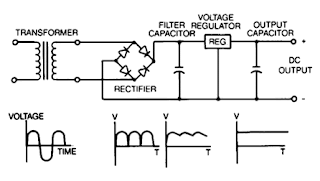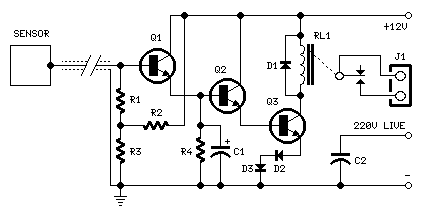How to Build Unregulated Linear Power Supply

Unregulated power supplies contain four basic components: transformer, rectifier, filter capacitor, and a bleeder resistor. This type of power supply, because of Us simpticity, is the least costly and most reliable for low power requirements. The disadvantage is that the output voltage is not constant It will vary with the input voltage and the load current, and the ripple is not suitable for electronic applications. The ripple can be reduced by changing the filter capacitor to an LC (inductor-capacitor) filter but the cost to make this change would make use of the regulated linear power supply a more economical choice.





